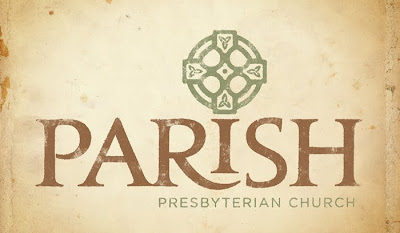I just saw Terence Melick’s much-talked-about film The Tree of Life this past week. More like cinematic poetry or an art house film than a typical mainstream movie, it is both euphorically beautiful and intensely thought provoking. Above all, it portrays a creation that is super-charged with wonder, and spends much of its two-and-a-half hour length inviting us simply to bask in that wonder in true Chestertonian spirit.
There are so many avenues worth exploring and commenting on. (My friend Brian McLain has some keen insights, especially regarding the film’s reliance upon the viewer’s own participation via his or her own subjective experiences, relationships, and memories, which I commend to you.) Perhaps I will get around to surveying some of those other perspectives as well, but for now I want to start at the shallow end and speak to those aspects that I feel most qualified to deal with, which have to do with the nature of some of the visual symbolism engaged in the film.
First of all, with the noted exception of the evolutionary framework employed (though even that is intriguingly toyed with, raising some issues that I will shelve for later discussion, perhaps) the symbolism that Melick employs is pervasively and explicitly Christian and scriptural. The film opens with a quotation from the Book of Job, Chapter 38:
Where were you when I laid the earth’s foundation...while the morning stars sang together and all the sons of God shouted for joy?
The themes of Job resurface again and again as the narrative unfolds, and there is also a very early and explicit reference to the tension between “Nature” and “Grace”. Taken simply at face value, this is obvious and potent enough. However, I think it also helps to reflect that within the Christian tradition, this fundamental dichotomy (at times pushed to dualistic extremes) has gone by a number of other names, at least some of which I think there is good reason to believe that Melick is also intending to conjure up at various points. These would include, but are by no means limited to: Law vs. Grace, Justice vs. Mercy, Righteousness vs. Sinfulness, Love vs. Judgement, Forgiveness vs. Discipline and/or Punishment, Free Will vs. Predestination, Salvation vs. Damnation, Flesh vs. Spirit.
Visually speaking, two of the most recurring images employed in The Tree of Life are fire and water. It’s really essential to have a self-conscious grasp of the biblical associations of these two metaphors in order to adequately appreciate how Melick employs them throughout his own work here. To give a brief biblical catalog: Water is primordial (Genesis 1:2). It is mysterious (due, at least in part, to its hidden depths and to its elusive, undulating motions). Water is most often associated with its life-granting and regenerative qualities—with birth and with re-birth, but it also has to be remembered that it can easily be turned into a threatening instrument of judgement and destruction. When contrasted with dry land, for instance, it often represents the forces of wickedness threatening to submerge and wipe out the people of God (Isaiah 8:7-8). Fire likewise is thought of first and foremost as an element of judgement, condemnation, and ruination, which it certainly is. But fire is also associated with holiness, and with testing and purification (Exodus 3:1-6, Isaiah 6:1-7, Psalm 12:6). Following this line, its implementation is often towards radically transformational as opposed to purely destructive ends (II Kings 2:11, Malachi 3:1-4, II Peter 3:5-13). Significantly, both water and fire are associated with the Holy Spirit. (Bird images are as well, which is also worth noting with respect to Melick’s film.)
As should already be apparent by this point, it is essential to consider that the relationship between these two “elements” and their various associations is not one of pure or simple antithesis, but rather, the antithesis is dynamic and complicated—wondrously so. To illustrate this point, let me turn to the work of another visual artist who explored these same themes to great effect in his own work: the nineteenth century landscape painter Frederic Edwin Church. (Gene Edward Veith offers an excellent critique of Church and the other prominent painters of the Hudson River School in his book Painters of Faith, and I owe the following observations to him.) I was reminded a number of times during The Tree of Life of Church’s painting Cotopaxi.
Here we have fire: the volcano, the smoky ash cloud, the sunset, and the eerily glowing foothills. We also have water: the waterfall, obviously, but also (possibly) the cool tones of the sky (the waters above the firmament) in the extreme background. Interestingly, the two elements intermingle in the mid-ground, as the fiery sun is reflected in the lake behind the falls. The question to be posed is this: when it comes to “fire” and “water” which of these forces is destructive and which is regenerative? Meditate on this painting, and think about it some more. Are you sure? Is the question, and its answer, a simple one after all?








